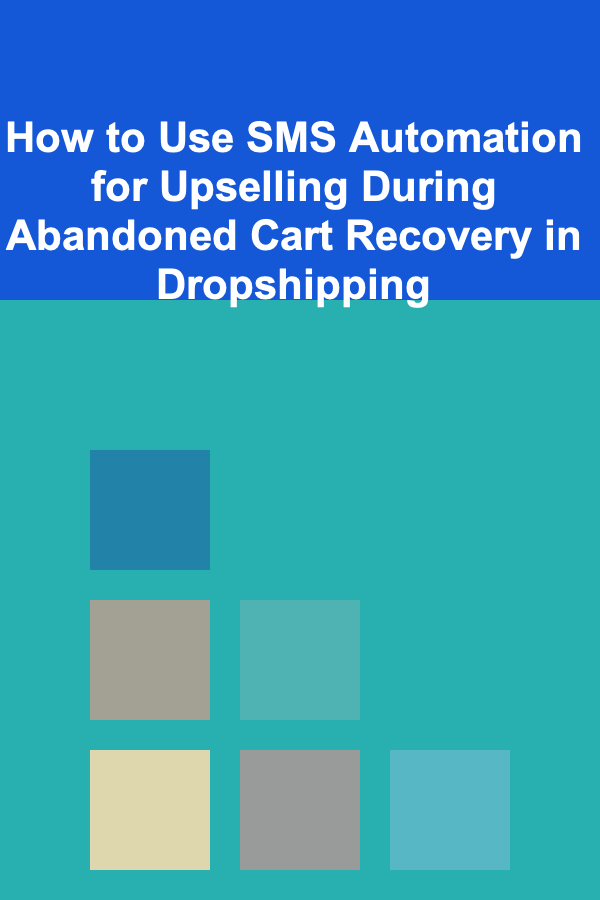How to Use a Habit Tracker Planner for Creative Projects
ebook include PDF & Audio bundle (Micro Guide)
$12.99$7.99
Limited Time Offer! Order within the next:
Not available at this time
Creative projects, whether it's writing, painting, crafting, or any other artistic endeavor, often require not just talent and inspiration but also discipline and consistency. While creativity can seem spontaneous, sustaining it over time is what separates fleeting ideas from completed masterpieces. One tool that can significantly help in this pursuit is a habit tracker planner.
A habit tracker planner is designed to monitor and track your daily actions, allowing you to develop positive routines, track progress, and stay accountable. When applied to creative projects, it transforms your creative process from a sporadic burst of activity to a sustained, disciplined journey. In this article, we'll explore how you can effectively use a habit tracker planner to enhance your creative projects, overcome procrastination, and build a consistent creative routine.
What is a Habit Tracker Planner?
A habit tracker planner is a tool used to track specific behaviors or actions over time. It is typically divided into months, weeks, or days, with each day serving as a box where you can mark off completed habits. The purpose is to visually track your progress and hold yourself accountable for performing positive habits. Habit trackers can be used to develop habits around any aspect of life, from exercise to healthy eating, but when applied to creative projects, they can become the backbone of your artistic productivity.
Benefits of Using a Habit Tracker for Creative Projects
- Increases Consistency: Creative projects often fail due to lack of consistency. A habit tracker helps you build a daily habit around your creativity.
- Improves Focus: By setting aside time for specific creative tasks, you can train your mind to focus on your project rather than getting distracted by other things.
- Tracks Progress: Habit trackers allow you to visually see the progress you've made, which can be highly motivating.
- Reduces Procrastination: Having a clear visual cue can push you to take action and avoid procrastination, making creative work feel like less of a chore.
- Provides Accountability: By keeping track of your daily habits, you hold yourself accountable to your goals, ensuring that you don't neglect your creative process.
How to Use a Habit Tracker Planner for Creative Projects
Step 1: Set Clear and Measurable Goals for Your Creative Project
Before you begin using your habit tracker, it's important to have a clear understanding of the specific creative goals you wish to achieve. Whether it's writing a novel, completing a painting, or finishing a film, the first step is to break down the larger goal into smaller, measurable milestones.
Example:
If your creative project is writing a novel, your larger goal might be to finish 60,000 words by the end of the year. Breaking this down:
- Write 500 words a day.
- Write for 1 hour a day.
- Complete a chapter every two weeks.
By defining specific, measurable actions, you can track your progress more easily. These actions are what you will ultimately log in your habit tracker.
Step 2: Choose the Right Habit Tracker for Your Needs
There are different types of habit trackers available, from paper planners to mobile apps. For creative projects, it's essential to choose a tracker that suits your working style and needs.
Options:
- Paper-based trackers: These can be found in journals or as printable templates. They provide a tactile experience and allow for customization, like adding stickers or drawings related to your creative project.
- Digital habit tracker apps: Apps like Habitica, Streaks, or HabitBull offer more flexibility and integration with your smartphone. These allow you to set reminders, track progress, and even gamify your experience.
- Bullet journals: If you like to combine creativity with productivity, a bullet journal can be the perfect tool for creating customized habit trackers.
Step 3: Break Down Your Creative Process into Actionable Habits
Now that you have your goal, it's time to turn it into daily habits. A key principle is to focus on action rather than outcomes. Creative projects often involve long hours and slow progress, so it's important to track the daily actions you take rather than expecting a finished product right away.
Example:
For a writer, your habits might include:
- Writing 500 words a day.
- Reading for 30 minutes each day to improve writing skills.
- Reviewing and editing a chapter each week. For an artist:
- Sketching for 30 minutes a day.
- Experimenting with a new technique every week.
- Working on a specific project for a set amount of time (e.g., 2 hours per day). For a filmmaker:
- Watching tutorials for 20 minutes each day.
- Writing a scene every day.
- Planning the next day's filming activities.
Step 4: Log Your Habits Consistently
Consistency is key to success with a habit tracker. Make a habit of checking in with your tracker every day. Ideally, this should become part of your daily routine---whether you do it in the morning, before bed, or during a specific time of day. Logging your progress gives you an immediate sense of accomplishment and reinforces the habit.
How to log:
- Daily Check-ins: Each day, mark off the habits you've completed. This could be as simple as checking a box, coloring in a square, or tapping a button on an app.
- Track Multiple Habits: If you have several habits related to your creative project, track them individually. For example, if you're both writing and reading, you can track both separately.
- Reward Yourself: You could create rewards for consistency. For instance, if you track 30 consecutive days of writing, reward yourself with something enjoyable (a treat, a new tool for your creative project, etc.).
Step 5: Analyze Your Progress
One of the best features of using a habit tracker is the ability to look back and analyze your progress. At the end of each week or month, review your completed habits. Are there any patterns that emerge? Do you notice that some days are consistently more productive than others? This can offer insight into how you work best and where improvements can be made.
Questions to ask:
- What days of the week am I most productive?
- Are there any specific habits that I'm struggling to maintain?
- What time of day works best for me to engage in creative tasks?
Tracking your progress in this way allows you to adjust your habits and refine your schedule. If you find that you're struggling with certain habits, you can break them down further into even smaller, more manageable actions.
Step 6: Overcome Creative Blocks and Build Momentum
One of the most common challenges in creative projects is creative block---that feeling of being stuck or uninspired. A habit tracker can be a powerful tool for overcoming these moments. By simply showing up every day and engaging with your creative process, even in small ways, you create momentum that can carry you through periods of doubt.
If you're stuck, try the following:
- Break the task into smaller pieces: Instead of aiming to write 500 words, try just writing for 10 minutes. Sometimes, starting is the hardest part.
- Incorporate variety into your habits: If you're a writer, read or brainstorm new ideas to get the creative juices flowing. For artists, try experimenting with new mediums or techniques.
- Use your habit tracker as motivation: Seeing a streak of completed days on your habit tracker can provide the push you need to keep going, even when inspiration seems elusive.
Step 7: Adapt and Adjust Over Time
Your creative habits will evolve as your project progresses. Perhaps you'll discover that certain habits no longer serve you as effectively as they did in the beginning. Don't be afraid to adapt and refine your goals and actions. If you find that your initial goal of writing 500 words a day is no longer working for you, try adjusting the amount or switching up the time of day you write. The beauty of a habit tracker is that it allows you to make adjustments as needed, while still maintaining a sense of structure.
Step 8: Celebrate Your Milestones
Finally, it's important to celebrate your wins, both big and small. Creative projects often span weeks, months, or even years, so it's easy to lose sight of the progress you've made. When you hit a milestone---whether it's finishing a chapter, completing a painting, or simply completing 30 days of creative work---take time to celebrate.
Types of Celebrations:
- Take a break: Give yourself a well-deserved day off.
- Treat yourself: Buy something special for your creative space.
- Share your progress: Share your accomplishment on social media or with friends.
Celebrating milestones not only boosts morale but also reinforces the importance of consistency and progress.
Conclusion
Using a habit tracker planner for creative projects can be a game-changer in terms of productivity, motivation, and personal growth. By breaking your creative goals into daily habits, tracking your progress, and making consistent efforts, you will gradually develop a routine that fosters creativity and drives your projects toward completion.
Remember, creativity is not just about waiting for inspiration to strike---it's about showing up and putting in the work, even when it's hard. A habit tracker helps you do just that, turning the creative process into a manageable and rewarding journey.

Enhancing User Experience with Effective Application Support
Read More
How to Create a Kid-Friendly Storage System for Toys
Read More
How to Use SMS Automation for Upselling During Abandoned Cart Recovery in Dropshipping
Read More
How to Use Storytelling in Content Marketing to Connect with Your Dropshipping Audience
Read More
How to Drive Website Traffic Strategically
Read More
Beyond Discipline: Fostering Cooperation, Not Control
Read MoreOther Products

Enhancing User Experience with Effective Application Support
Read More
How to Create a Kid-Friendly Storage System for Toys
Read More
How to Use SMS Automation for Upselling During Abandoned Cart Recovery in Dropshipping
Read More
How to Use Storytelling in Content Marketing to Connect with Your Dropshipping Audience
Read More
How to Drive Website Traffic Strategically
Read More